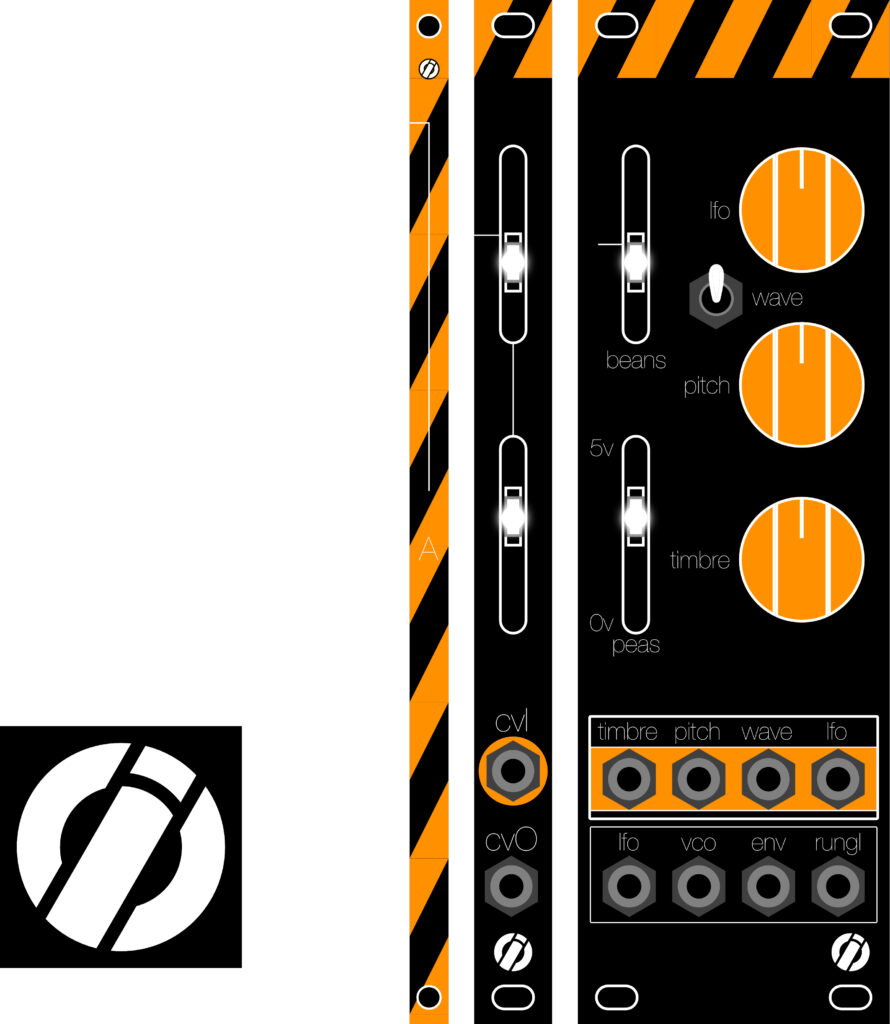I’ve started a new endeavor with my frequent creative collaborator, Septic Snake: Oblique Industry. After years of making weird electronic music together, we’ve started designing sound synthesis modules to Open Source and manufacture.
One of the things that one has to do at the beginning of a public project that is to figure out how to express the spirit of the thing you’re creating for the audience you’re speaking to. The decision you make at this point can form the principles that you use as tools to determine how you want the project to go when you encounter the unexpected situations that begin appearing immediately.

A central element of those principles is the aesthetic identity of the project. The identity includes colors, fonts, line weights, and proportions that you discover in the creative process.
Like all identity projects I do, this one is coming in a set of three initial directions. The first one I’ve gotten done is called Powerstation. It’s the mass-produced version of my own hacked-together synthesizer, the Black Centipede. It’s a lot more conservative than the Black Centipede is, which I described once as “Military/Industrial Waste” and I might try it with some more chaotic patterns, too. Becoming too conservative when trying to appeal to a broader audience is an easy trap to fall into.

Aesthetically, you want to be the second penguin at the water’s edge: the first one in gets the first shot at the fish, but is at the greatest risk of being eaten by a seal. I’m frequently the first penguin. All the following penguins have to confront fish that are now alert and on the run. But the second one gets almost as good a shot at the fish, and gets to see if the guy in front got themself et and figure out if there are more seals before jumping in.
That is, if you get too weird, no one will be able to see what you’re getting at, sure. But if you’re not weird enough, you wind up chasing the remaining fish who are now on missions of their own. When you’re doing creative things, but competing on price — because those dollars are the remaining fish — then you’re in trouble.
The modules we’re considering are pretty unusual, representing pretty experimental directions. I’m trying to figure out how to express that in a way that piques the interest of a scene that craves both weird novelty and retro Techno.

